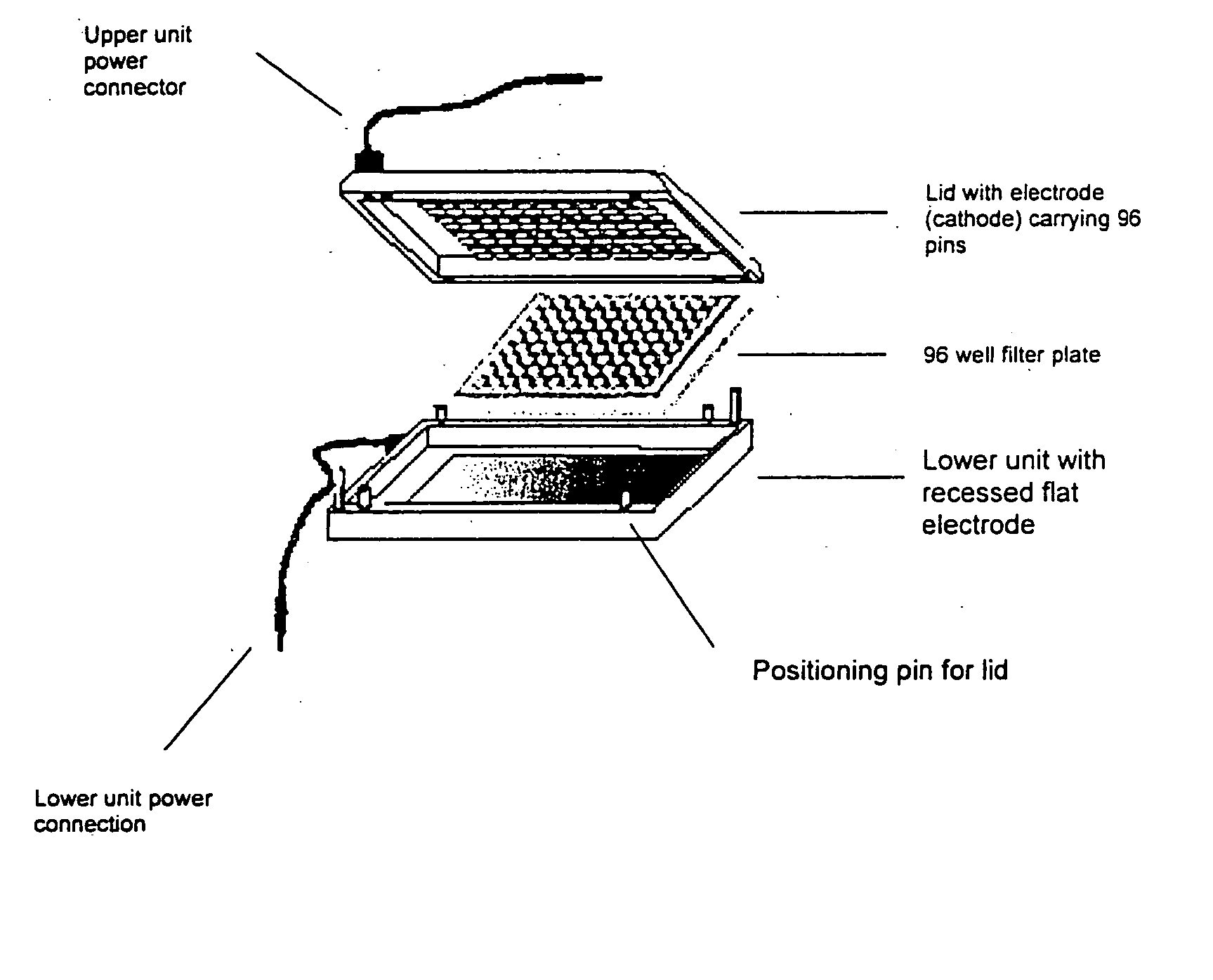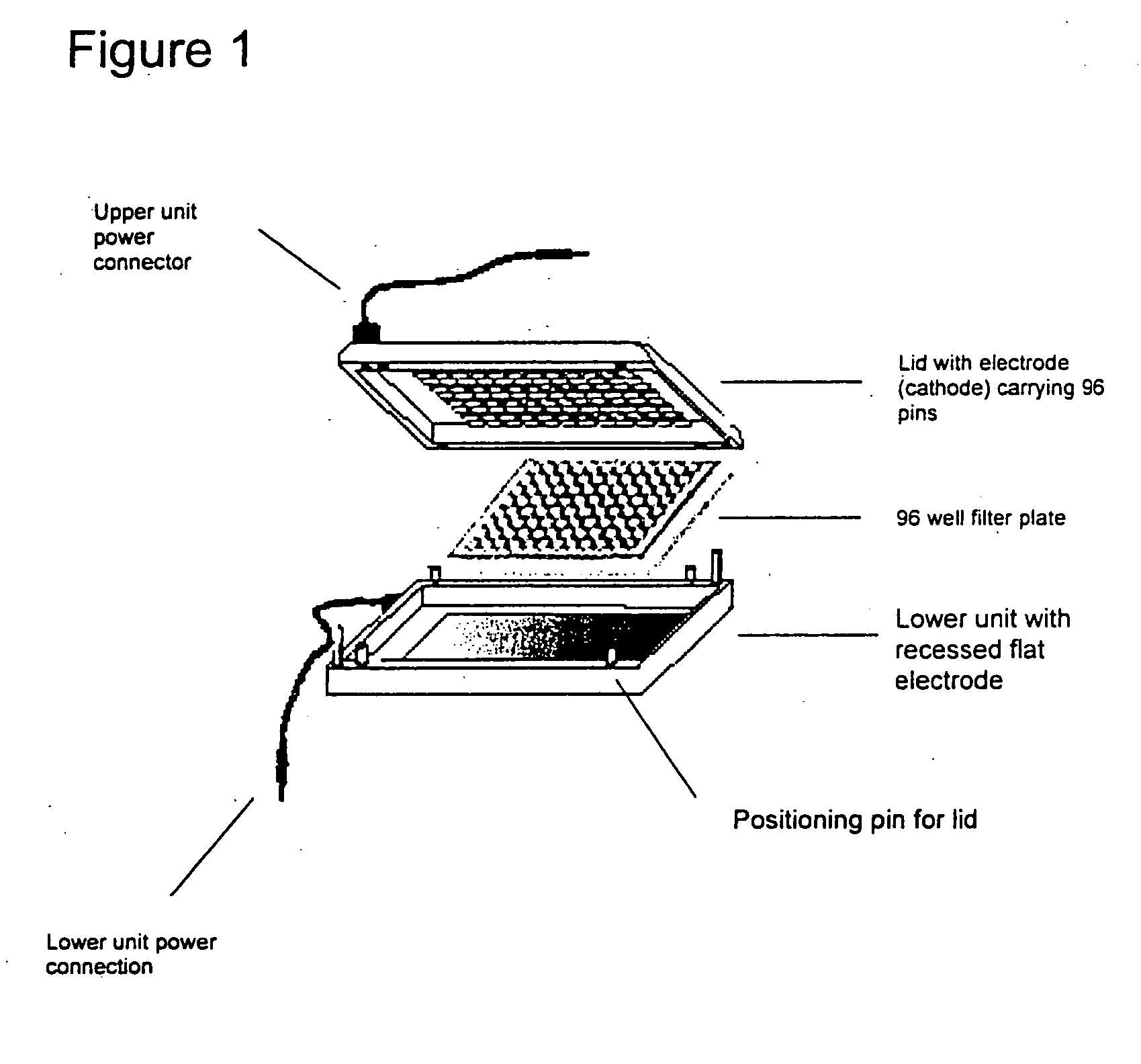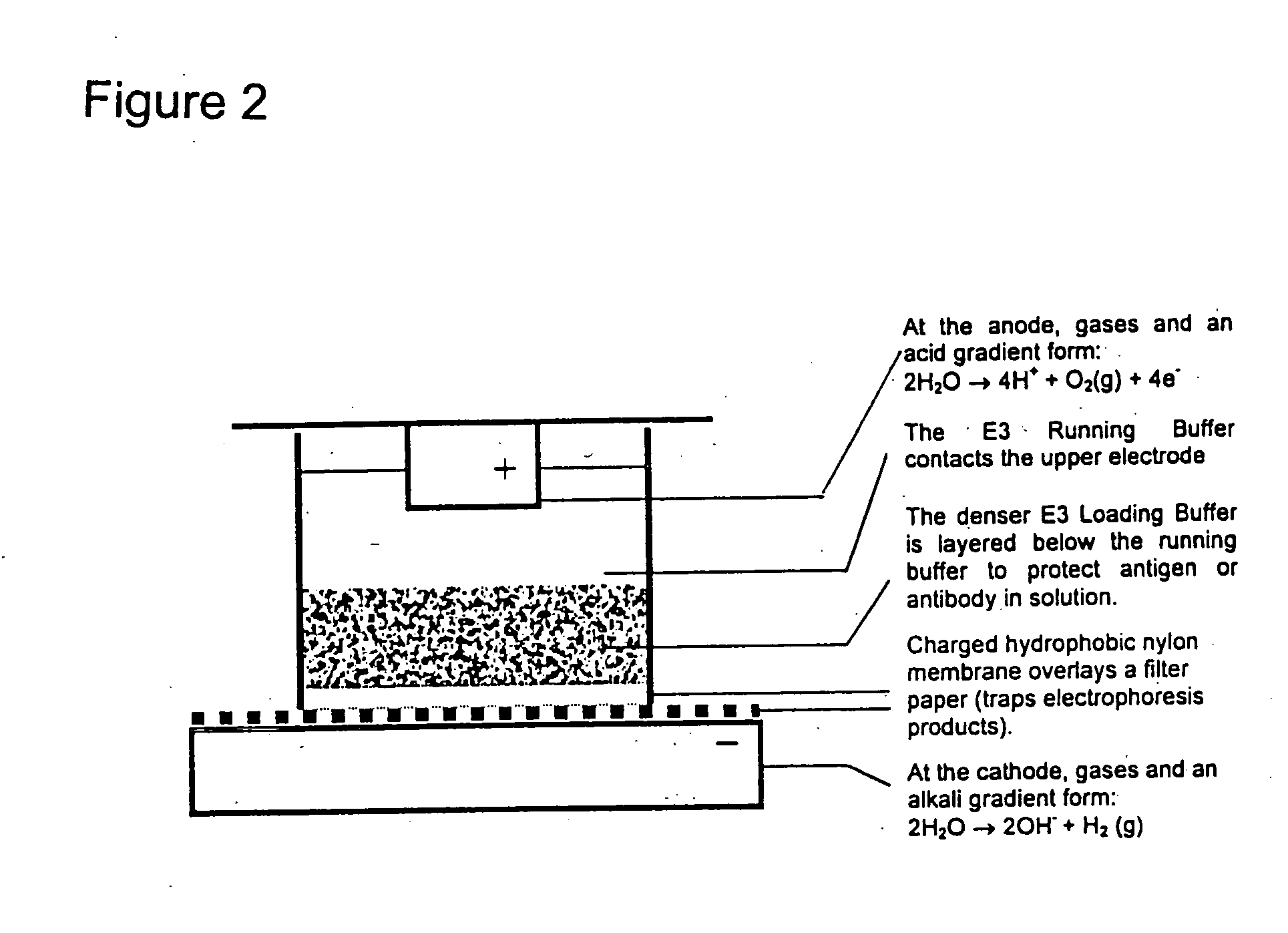Electrophoretically enhanced methods
a technology of enhanced methods and enhanced methods, applied in the direction of fluid pressure measurement, liquid/fluent solid measurement, peptide measurement, etc., can solve the problems of limiting the accuracy and usefulness of analytical methods, concentrations, solvents, and the inability to alter reaction conditions,
- Summary
- Abstract
- Description
- Claims
- Application Information
AI Technical Summary
Benefits of technology
Problems solved by technology
Method used
Image
Examples
example 1
Device for Electrophoretically Enhanced Assays
A device for carrying out Electrophoretically Enhanced ELISA assays was made as follows. The device is illustrated schematically in FIGS. 1 and 2. It was designed to match the form factor (i.e., the size and shape) of standard 96 well microtiter plates. The device was made mainly of Delrin, a light, low friction plastic that is easy to machine to shape. Delrin is very resistant to wear, has high volume resistivity (1×1014 Ohm / cm), low water absorption (less than 0.25% in 24 hours), and good tensile strength (10,000 pounds per square inch), attractive properties for this apparatus. And it is widely available in dimensional sheets that can be worked readily and machined to shape.
Except perhaps for prototyping, other materials may be superior to Delrin. Suitable materials for the main structural parts of devices in accordance with the present invention generally should be non-conducting, wear-resistant, easy to seal, machinable, imperme...
example 2
General Procedure for Using the Device of Example One to Carry Out Electrophoretically Enhanced Capture ELISAs
Wells of standard commercially available filter-bottom 96 well plates were coated with a capture antibody dissolved in Coating Buffer (75 mM Tris, 450 mM glycine, pH 8.7) using a well-known vacuum coating procedure. The wells were washed and then blocked with Blocking Buffer (75 mM Tris, 450 mM glycine, 10 mM Histidine, pH 8.7, 2% milk powder) to reduce non-specific binding. Blocking Buffer was removed and the wells were washed again and then partially filled with Running Buffer (75 mM Tris, 450 mM glycine, 10 mM Histidine, pH 8.7). Samples were prepared in 75 mM Tris, 450 mM glycine, 10 mM Histidine, pH 8.7, 2% milk powder, 20% glycerol (Loading Buffer) and layered into the wells beneath the Running Buffer. The lower electrode of an apparatus for carrying out electrophoretic enhancement was covered with a sheet of filter paper wetted in Running Buffer. The plate with samp...
example 3
E3 and Standard ELISA Procedures
Outline and comparison of typical procedures for standard ELISAs and Electrophoretically Enhanced ELISAs.
E3 Coating (60 Seconds)
The antigen or capture antibody is applied to the filter, using vacuum, in a specially formulated high pH buffer. Below is a table comparing two E3 enhanced coating procedures, one relying on vacuum coating, which is preferred, the other on electrocoating.
E3 with vacuum coatingSTEPSE3 with electro coatingAdd 50 ml antigen to11Add 270 ml buffer to each welleach well2Add 50 ml of antigen to each well asunderlayer (carefully under the firstbuffer)Incubate for 5 minutes23Add filter paper, soaked in runningthen apply vacuumbuffer.Start electrophoresis for 6 minutesAdd 50 ml of blocking34Empty wells then add 270 mlsolution to each wellbuffer to each well5Add 50 ml of blocking solution asunderlayer (carefully under the firstbuffer)Incubate for 5 minutes46Replace filter paper, soaked inthen apply vacuumrunning buffer...
PUM
| Property | Measurement | Unit |
|---|---|---|
| pH | aaaaa | aaaaa |
| time | aaaaa | aaaaa |
| pH | aaaaa | aaaaa |
Abstract
Description
Claims
Application Information
 Login to View More
Login to View More - R&D
- Intellectual Property
- Life Sciences
- Materials
- Tech Scout
- Unparalleled Data Quality
- Higher Quality Content
- 60% Fewer Hallucinations
Browse by: Latest US Patents, China's latest patents, Technical Efficacy Thesaurus, Application Domain, Technology Topic, Popular Technical Reports.
© 2025 PatSnap. All rights reserved.Legal|Privacy policy|Modern Slavery Act Transparency Statement|Sitemap|About US| Contact US: help@patsnap.com



